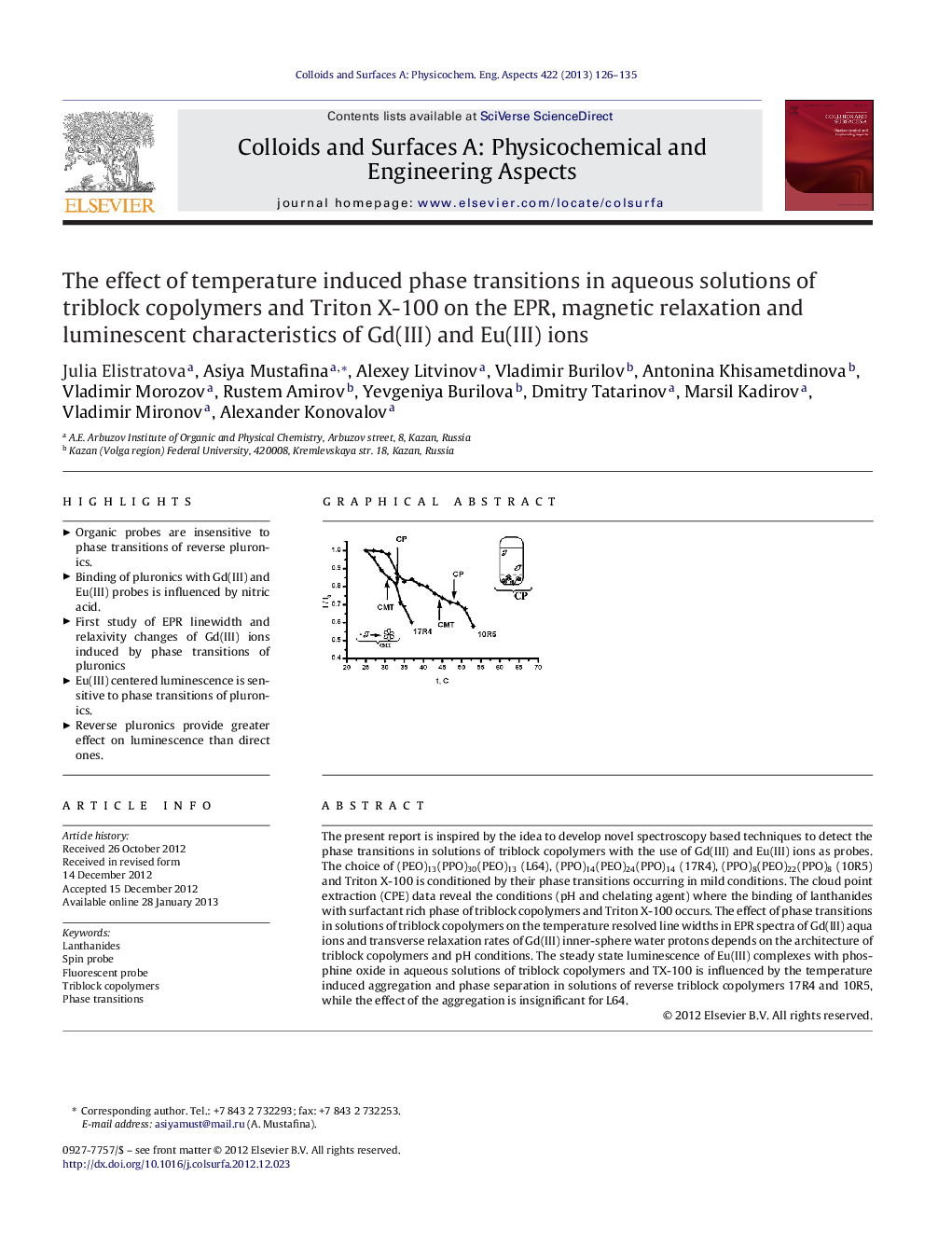| Article ID | Journal | Published Year | Pages | File Type |
|---|---|---|---|---|
| 593677 | Colloids and Surfaces A: Physicochemical and Engineering Aspects | 2013 | 10 Pages |
The present report is inspired by the idea to develop novel spectroscopy based techniques to detect the phase transitions in solutions of triblock copolymers with the use of Gd(III) and Eu(III) ions as probes. The choice of (PEO)13(PPO)30(PEO)13 (L64), (PPO)14(PEO)24(PPO)14 (17R4), (PPO)8(PEO)22(PPO)8 (10R5) and Triton X-100 is conditioned by their phase transitions occurring in mild conditions. The cloud point extraction (CPE) data reveal the conditions (pH and chelating agent) where the binding of lanthanides with surfactant rich phase of triblock copolymers and Triton X-100 occurs. The effect of phase transitions in solutions of triblock copolymers on the temperature resolved line widths in EPR spectra of Gd(III) aqua ions and transverse relaxation rates of Gd(III) inner-sphere water protons depends on the architecture of triblock copolymers and pH conditions. The steady state luminescence of Eu(III) complexes with phosphine oxide in aqueous solutions of triblock copolymers and TX-100 is influenced by the temperature induced aggregation and phase separation in solutions of reverse triblock copolymers 17R4 and 10R5, while the effect of the aggregation is insignificant for L64.
Graphical abstractFigure optionsDownload full-size imageDownload as PowerPoint slideHighlights► Organic probes are insensitive to phase transitions of reverse pluronics. ► Binding of pluronics with Gd(III) and Eu(III) probes is influenced by nitric acid. ► First study of EPR linewidth and relaxivity changes of Gd(III) ions induced by phase transitions of pluronics ► Eu(III) centered luminescence is sensitive to phase transitions of pluronics. ► Reverse pluronics provide greater effect on luminescence than direct ones.
